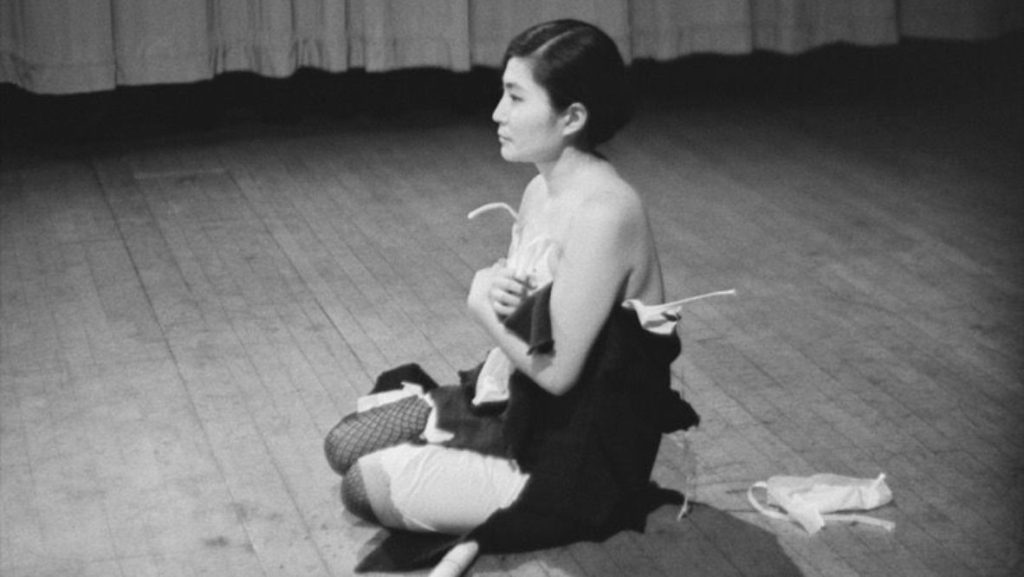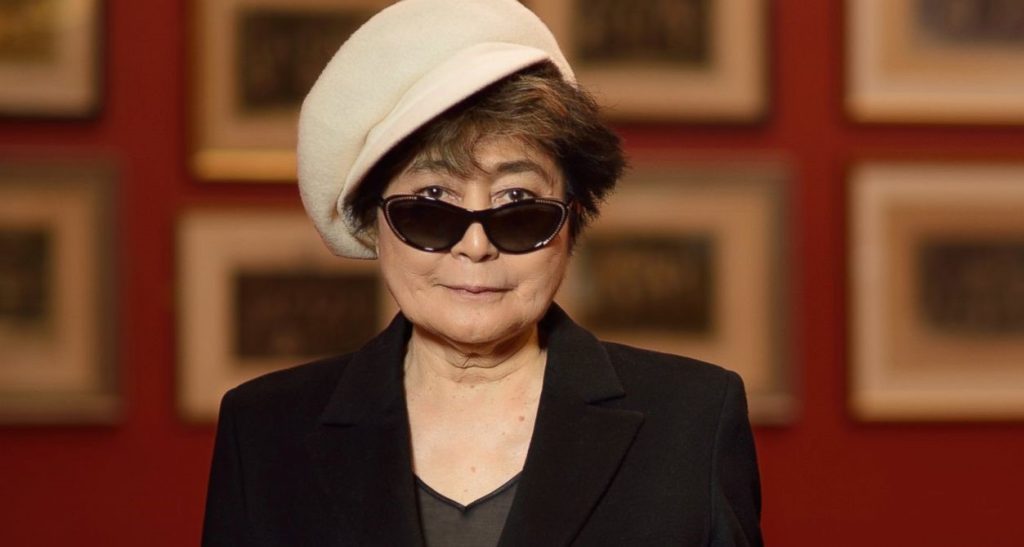Japanese singer, artist, and peace campaigner Yoko Ono rose to stature worldwide as the spouse of renowned rock band The Beatles member John Lennon. She was born on February 18, 1933, in Tokyo, Japan. Known for her experimental music and avant-garde artwork, Ono has been well-known in the art world since the 1960s.
Performance art, conceptual art, and Fluxus—a radical avant-garde art movement of the 1960s and 1970s—are all frequently incorporated into Yoko Ono’s artistic creations. Her early abstract pieces gained prominence, like “Cut Piece” (1964), inviting viewers to cut away sections of her dress.
In the late 1960s, she started dating John Lennon, and the two got married in 1969. They worked together on artistic and musical endeavours, such as the 1980 album “Double Fantasy,” published just before John Lennon’s demise.
Since Lennon’s passing, Yoko Ono has continued her artistic career and activism, advocating for peace and participating in several environmental and human rights initiatives. Yoko Ono remains an integral and influential personality in modern art and music, despite differing views of her influence on The Beatles and her part in John Lennon’s life.
Yoko Ono’s Artworld
In conceptual and avant-garde art, Yoko Ono is regarded as a pioneer. Her early pieces questioned conventional art ideas and encouraged audience engagement, such as “Cut Piece” and “Grapefruit,” a book of abstract art instructions. Yoko Ono is well-known for her contributions to performance art. She frequently broke the boundaries between the artist and the audience throughout her performances, promoting involvement and active participation.

During the 1960s and 1970s, Ono was a part of the radical and multidisciplinary Fluxus art movement. The goal of Fluxus artists was to promote spontaneity and experimentation while erasing the distinctions between various artistic fields. The context of feminist art has been used to discuss Yoko Ono’s work. Her conceptual works and performances addressed issues of gender roles, identity, and the female experience, adding to the larger feminist conversation in the art world.
There is no denying Yoko Ono’s influence on The Beatles and John Lennon. The couple introduced avant-garde aspects to the general public through their joint artistic and musical endeavours. Together, they launched campaigns like “Bed-In for Peace” and “War Is Over! (If You Want It)” that combined activism with art to promote social and political causes. Yoko Ono has created art and participated in activism throughout her multi-decade career. Her longevity in the art world highlights her continued influence and importance.
As a vocal advocate for peace and human rights, Yoko Ono has connected her art with a broader social and political framework through several projects and activities.
Major Work on Yoko Ono
In the performance art piece Cut Piece (1964), Ono asks the audience to cut away portions of her clothes as she sits on stage. Concepts of trust, vulnerability, and the dynamic between the artist and the audience were all questioned in this piece. Ono’s book Grapefruit (1964) comprises educational sections, or “event scores,” that invite the reader to participate in various creative but frequently easy tasks. This piece holds great importance within the field of conceptual art.
Yoko Ono’s second solo album, Fly (1971), is an avant-garde and experimental musical work. Some of the album’s tracks combine non-traditional musical components with Ono’s vocalisations. John Lennon and Yoko Ono staged an anti-war demonstration 1969 called Bed-In for Peace. They used their celebrity position to raise awareness of the peace movement by staging two “bed-ins” for Peace during their honeymoon, one in Amsterdam and one in Montreal.
Imagine (1972) is a documentary film starring John Lennon and Yoko Ono. The movie shows the pair at home doing various creative and private pursuits, and it offers an insight into the process of recording John Lennon’s album “Imagine.” Ono used the sky in a series of conceptual artworks titled Sky Pieces (1966). In “Ceiling Painting,” a ladder is positioned within a gallery, and a magnifying glass is suspended from the ceiling, beckoning spectators to read a word inscribed on the top.
In his 1966 short film Cut Film, Ono subverts conventional notions of narrative and filmmaking with a single static shot of a woman’s skirt being gradually cut away. The multi-media peace campaign “War Is Over! (If You Want It)” (1969) by John Lennon and Yoko Ono featured newspaper ads, billboards, and posters with the slogan “War Is Over! If You Want It.” The campaign’s goals were to oppose the Vietnam War and advance peace.
Wish Tree is a participatory art project that has been going on since 1996. It asks visitors to write their wishes on little pieces of paper and tie them to tree branches. Wish Trees, created by Yoko Ono, can be found worldwide. In 1966, Ono created a conceptual piece called Acorn, which entailed giving acorns to gallery patrons along with planting instructions. The intention was to represent rebirth, development, and the possibility of constructive transformation.
Cut Piece by Yoko Ono
Yoko Ono’s “Cut Piece” is a well-known and thought-provoking performance art piece. Ono gave the first performance of it in 1964 at Kyoto, Japan’s Yamaichi Concert Hall. Ono and others have recreated the commission multiple times, making it a key piece in the history of performance art.
In “Cut Piece,” Yoko Ono wore a basic outfit—typically a formal dress—while sitting calmly and meditatively on a stage. She was presented with scissors, and each audience member was encouraged to come forward and cut a portion of her garment. Depending on how many people were involved and how long the performance lasted, the act continued until Ono was entirely or almost completely exposed.
The work looks at trust, vulnerability, and the power relationship between the performer and the audience. Ono questioned conventional ideas of the passive, static position of the artist in the creation of art by giving up control over her look and letting others decide how the performance would end.
Many interpretations of “Cut Piece” exist, such as a critique of the objectification of women, a declaration of the audience’s destructive nature, and an appeal for harmony and peace. Cutting can be viewed as both creative and bad, and the work encourages reflection on the results of our choices.
The show is a turning point in developing conceptual and interactive art and the Fluxus movement. Because it tackles themes of the female body, agency, and gaze, it has also impacted the conversation around feminist art.
Featured Image: abcnews.go.com





